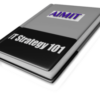Use this resource on impactful virtual events to discover how consultants can leverage webinars, workshops, and live Q&A sessions for higher attendance, meaningful engagement, and consistent lead generation. Learn to integrate CIO Index tools—such as the Events Calendar and community announcements—to maximize visibility and showcase your expertise.
I. Introduction
Virtual events have rapidly moved from a convenient alternative to in-person gatherings to a central pillar in modern professional outreach. Whether you’re offering thought leadership, generating qualified leads, or simply looking to connect with peers in your industry, webinars, workshops, and live Q&A sessions now serve as a vital channel for engaging diverse, often global, audiences. As more organizations transition to remote and hybrid work models, these online forums provide critical opportunities for visibility, relationship-building, and real-time knowledge exchange.
Yet the true power of virtual events lies in the potential to create a long-lasting impact. When done right, they can enhance your credibility as a consultant, expand your professional network, and drive tangible business outcomes. Through strategic planning, polished execution, and thoughtful follow-up, you can transform a one-time session into a springboard for future collaborations, client conversions, and sustained community engagement.
This article offers a comprehensive roadmap for planning, promoting, and hosting successful virtual events—tailored specifically to consultants who want to leverage CIO Index. You’ll learn how to identify your goals, choose the right format, and craft compelling content that resonates with IT leaders and decision-makers. Additionally, we’ll illustrate how to maximize reach and engagement by utilizing the platform’s specialized features—from listing your event on CIO Events to tapping into community boards and targeted promotional tools. By the end, you’ll have both the strategic insight and practical know-how to produce digital experiences that truly stand out in today’s crowded virtual landscape.
II. Defining the Event Strategy
Creating an impactful virtual event requires more than just picking a date and inviting people. It starts with a clear strategy that aligns every decision—from the format you choose to the content you deliver—with a defined purpose and a well-researched topic. When these elements work in harmony, you’re far more likely to produce an event that resonates with attendees, fulfills your objectives, and highlights your expertise in a way that drives meaningful engagement.
A. Setting Clear Objectives
Establishing your event’s purpose is the cornerstone of a strong strategy. Ask yourself what success looks like: Are you aiming to generate new leads, increase brand awareness, or build a community through networking opportunities? Each of these goals will influence your approach:
- Lead Generation:
If your main objective is to grow your pipeline, consider incorporating interactive elements such as live Q&As or polls that entice attendees to share information. You can also design registration forms with targeted questions to better segment and follow up with potential clients. - Brand Awareness:
For consultants looking to increase visibility, focus on delivering thought-provoking content that sets you apart as a knowledgeable authority. This might involve spotlighting industry trends or providing in-depth insights that readers won’t easily find elsewhere. - Networking and Community Building:
If relationship-building is your priority, prioritize breakout discussions or small group sessions. Give attendees opportunities to connect with each other, making your event a hub for like-minded professionals who can exchange ideas and experiences.
Equally important is identifying the ideal target audience—for example, CIOs seeking strategic guidance, IT leaders who want actionable solutions, or technology partners looking for collaboration opportunities. Tailor your event’s message, language, and level of depth to the specific group you wish to attract. By matching your objectives to an audience’s needs and interests, you’ll not only draw in the right attendees but also keep them engaged throughout the session.
B. Choosing the Right Format
Once your objectives and target audience are clear, the next decision is determining how best to deliver your content. Each format has its strengths:
- Webinars:
Ideal for delivering structured presentations or in-depth training. Webinars work well when you want to provide step-by-step guidance or showcase detailed research findings. They’re also effective for reaching larger audiences who prefer passive learning with occasional Q&A. - Panel Discussions:
Panels allow multiple experts to share diverse viewpoints on a single topic. This format often generates lively dialogue and can appeal to attendees who appreciate hearing different experiences and opinions. - Roundtables or Workshops:
If your event theme benefits from high interactivity—like brainstorming, skill-building, or problem-solving—consider a roundtable or workshop. Smaller group settings foster in-depth conversation and hands-on activities, especially when participants bring varied backgrounds. - Live Q&A Sessions:
Perfect for a more spontaneous, audience-driven experience. Live Q&As offer real-time engagement and can humanize the speaker or brand as participants feel acknowledged and part of the conversation.
When choosing between these options, consider practical factors like the anticipated number of attendees, the complexity of your topic, and the level of interaction you want to encourage. A highly technical subject might work best as a webinar that allows experts to present data without too many interruptions, whereas a conversational, trend-focused topic could flourish in a roundtable where participants share multiple perspectives.
C. Determining Event Topic and Relevance
No matter how polished your event logistics and marketing are, the core topic must resonate with your audience’s pain points, interests, or ambitions. To ensure your content stands out:
- Align With Current Industry Trends and Client Pain Points
Stay informed on what’s most pressing in your field, whether it’s the latest breakthroughs in cloud computing, changing data privacy regulations, or the evolving role of CIOs in digital transformation. Events that address urgent and real-world challenges tend to draw stronger attendance and higher engagement. - Research Trending Topics on CIO Index
CIO Index offers a window into what IT leaders are discussing, what content is gaining traction, and which topics are generating buzz in community forums. Regularly scan these discussions to spot emerging themes or repeated questions. When you position your event to answer a frequently asked question or shed light on a hotly debated issue, you’re more likely to capture—and keep—the attention of those who need the information most. - Balance Breadth and Depth
While you want to appeal to a broad audience, make sure you’re offering enough depth to provide unique value. Attendees will quickly disengage if your content is too basic or generic. Conversely, an overly niche or technical event might alienate some who aren’t ready for advanced material. Strive for a topic scope that’s neither too broad nor too narrow, hitting that sweet spot of relevance and expertise.
By carefully defining your event strategy—starting with clear objectives, choosing a suitable format, and honing in on a timely, relevant topic—you set the stage for a virtual session that attracts the right people and delivers tangible benefits. Each decision should build upon the last, culminating in an event that not only meets but exceeds attendee expectations. As you refine your approach, keep your finger on the pulse of discussions within the CIO community. You’ll discover valuable insights, tap into new collaboration opportunities, and consistently craft events that stand out for their strategic focus and depth of content.
III. Planning the Event Logistics
Even the most compelling content can be undermined by poor logistics. From selecting a virtual platform that aligns with your goals to coordinating schedules across different time zones, thoughtful preparation ensures a smooth experience for both hosts and attendees. In this section, you’ll learn how to choose the right tools, find the ideal event date and time, and assign critical roles to ensure everyone knows exactly what to do before, during, and after the event.
A. Selecting a Suitable Virtual Platform
The first logistical decision you’ll make is which virtual platform to use. Your choice can heavily influence attendee engagement and overall event quality, so it’s worth doing your homework. Popular options include Zoom, Microsoft Teams, Webex, Google Meet, and a host of others—each offering its own mix of features, capacity limits, and pricing structures.
- Match Features to Event Format
If you’re hosting a highly interactive workshop, platforms with breakout rooms, polls, and robust chat functions can enable deeper engagement. For a webinar aimed at large audiences, consider a platform that easily handles high attendee volumes and offers seamless recording capabilities. - Evaluate Ease of Use and Accessibility
A user-friendly interface can make a big difference in how comfortable your audience feels. Complex software might discourage potential attendees or cause technical hiccups, so test different platforms to see which one feels most intuitive. - Coordinate With CIO Index Tools
Once you’ve selected a platform, you can seamlessly integrate your event details into the CIO Index Events Calendar. By including your chosen platform link and highlighting unique features—such as planned polls or interactive Q&A sessions—you’ll help prospective attendees understand why your event stands out.
B. Scheduling and Timing
Pinpointing the right date and time for your virtual event can significantly influence attendance. This becomes especially critical if you’re targeting an international audience or individuals with busy schedules.
- Accommodate Different Time Zones
Check where most of your attendees are likely to be located. If you have a global audience, opting for a midday slot in one region might translate to an early morning or late evening in another. While you can’t please everyone, aim to find a window that works for as many participants as possible. - Avoid Conflicts and Saturation
Keep an eye on industry events, major conferences, and holidays that may compete for your audience’s attention. A quick look at the CIO Index calendar or community boards can reveal if another major webinar or summit is taking place on your intended date. Scheduling your event at a less crowded time can help you stand out and draw in a focused audience. - Build Anticipation Through Promotion
Once you’ve nailed down a date and time, start your promotional activities well in advance. Announce the event on CIO Index’s Events Calendar, share the news across your social media channels, and send out “save the date” emails. Consistent reminders in the weeks leading up to your event can boost both registration and attendance rates.
C. Establishing Event Roles and Responsibilities
A virtual event often involves multiple people behind the scenes, each contributing specialized skills to ensure a flawless experience. Clearly defining these roles from the outset helps everyone work efficiently and confidently.
- Moderator or Host
This person welcomes attendees, introduces speakers, and steers the discussion. They set the tone by explaining guidelines—like how to submit questions—and keep the event on track by managing transitions between segments. - Panelists, Guest Speakers, or Subject Matter Experts
The people sharing insights form the backbone of your event’s content. Whether they’re sharing original research or fielding questions, ensure they understand the key talking points and overall goal. Arrange a pre-event briefing so each expert knows how their segment fits into the larger program. - Technical Support
Even the most well-prepared event can encounter hiccups, from spotty audio to dropped connections. Designate a dedicated tech support person who can troubleshoot issues in real time, whether it’s assisting attendees with logins or working behind the scenes to fix audio-visual glitches. - Rehearsals and Dry Runs
Bringing everyone together for a test run is crucial, especially if your event involves multiple speakers or interactive features. Have them walk through their slides, test polls and breakout rooms, and even practice a Q&A session. These rehearsals help iron out technical kinks and give the team a sense of timing, ensuring a polished, professional feel on the big day.
Bringing It All Together
Robust event logistics don’t just happen by accident; they require attentive planning and clear communication. By choosing a platform that aligns with your format, scheduling a time that accommodates the largest share of your audience, and assigning roles to handle every detail, you’re laying the groundwork for an event that runs smoothly from start to finish. Combine these efforts with CIO Index’s promotional tools—like community announcements and the Events Calendar—and you’ll create a seamless, professional experience that keeps participants coming back for more.
IV. Crafting Engaging Content
Even the best logistical setup won’t save a virtual event if the content fails to resonate. Crafting an appealing agenda, designing compelling visuals, and preparing speakers effectively are essential steps in capturing and sustaining your audience’s attention. Through careful planning—from the opening hook to the final Q&A—you can create a vibrant, interactive session that delivers genuine value.
A. Outline and Presentation Flow
As you structure your presentation, think of it as telling a story rather than just relaying facts. Aim to strike a balance between clarity and intrigue:
- Hook the Audience Early
In the first few minutes, your goal is to transform passive listeners into active participants. One way to do this is by stating a compelling problem or posing a provocative question. For instance, “How many organizations are truly prepared for a 24/7 online workforce?” sets the stage for exploring solutions and challenges that attendees are eager to learn about. - Focus on Value-Driven Insights
As you move into the main body of your talk, concentrate on highlighting practical takeaways and actionable strategies. Attendees should walk away feeling they’ve gained new perspectives or skills that will help them address their own professional challenges. Keep each point direct and concrete, reinforcing how it connects to the big picture. - Maintain a Logical Progression
Transition smoothly between topics using clear, brief summaries. For example, after discussing a key trend or challenge, pivot by saying, “Now that we understand the scope of the problem, let’s explore a few proven methods to tackle it.” This helps your audience see the flow of ideas rather than feeling bombarded by disconnected data.
B. Visuals and Interactive Elements
Modern audiences have grown used to visually rich presentations—and short attention spans. By integrating engaging visuals and interactive components, you can keep your virtual event lively:
- Slide Design Best Practices
Opt for minimal text and strong graphics or images to support your key points. If your talk requires data or statistics, use bold, easy-to-read charts to illustrate findings rather than cluttered bullet points. Ensuring fonts and colors remain consistent throughout your deck ties it all together in a professional style. - Interactive Tools
Tools like polls, quizzes, or live Q&A sessions energize listeners and break the monotony of a one-way presentation. You might pose a quick poll to gauge the audience’s stance on a controversial issue, then segue into discussing the real-world implications of that viewpoint. Remember to keep these moments brief and purposeful—interaction should illuminate key ideas, not derail them. - Encourage Peer-to-Peer Engagement
If your platform allows, consider features like breakout rooms or group chats. These provide small-group settings where participants can discuss specific questions or solve mini-challenges, ensuring they stay actively engaged rather than tuning out.
C. Speaker Preparation and Practice
A well-constructed outline and eye-catching slides can still fall flat if the speakers themselves aren’t ready to deliver a stellar performance:
- Coaching Speakers on Delivery Style
Not everyone is a natural presenter. Offer tips on pacing, tone, and body language (if you’re using cameras). Encourage speakers to rehearse, especially if they’re sharing personal anecdotes or transitioning between slides. If you’re featuring multiple speakers, coordinate time limits and hand-offs so each segment feels cohesive. - Anticipating Audience Questions
Prepare for a range of inquiries: from high-level strategic queries to technical, niche-specific ones. Having talking points and data on hand helps your speakers address questions on the spot with confidence. This level of preparation also gives the impression that your team is well-informed and genuinely invested in helping attendees find solutions. - Managing Technical Glitches
Technical issues can—and often do—occur. Establish a quick protocol for your speakers if, for example, someone’s microphone cuts out or a slide deck won’t load. This might involve handing the conversation off to a co-presenter or switching to a backup platform. Reassuring attendees and resolving issues quickly can help maintain professionalism and minimize disruptions.
Crafting engaging content is both an art and a science, blending strategic planning with creative flair. By organizing your material into a logical flow, injecting interactive elements, and ensuring your speakers are well-prepared, you’ll produce a virtual event that stands out for its clarity, relevance, and energy. Pair these efforts with CIO Index’s promotional channels—where you can highlight key insights or tease interactive components—and you’ll set the stage for an event that attendees will talk about long after it ends.
V. Promotion and Marketing
You’ve laid a strong foundation by defining a clear strategy and crafting compelling content. Now it’s time to broadcast your message and attract the right audience. Effective promotion not only boosts attendance but also helps establish your credibility and authority in your field. In this section, you’ll learn how to leverage CIO Index’s tools, build a persuasive registration page, and keep momentum high with timely reminders and content teasers.
A. Pre-Event Promotion
To maximize visibility, start your promotional efforts well in advance. By casting a wide net—both within and beyond CIO Index—you can reach the specific demographic that finds your topic most relevant.
Leveraging the CIO Index Events Calendar
Posting your event on the CIO Index Events Calendar places it directly in front of IT professionals and thought leaders who are actively seeking insights, networking opportunities, or potential business collaborations. Craft a succinct yet inviting description, emphasizing why your session stands out. If you’re featuring recognized speakers or tackling a cutting-edge topic, mention that explicitly to spark immediate interest.
Tapping Community Boards and Newsletters
Beyond the Events Calendar, CIO Index community boards and newsletters serve as prime channels for raising awareness. Brief, benefits-focused announcements—especially those highlighting how attendees can solve pressing challenges—often see higher engagement rates. These platforms also allow you to target specialized groups or forums based on their specific focus areas, such as cloud computing or cybersecurity.
Utilizing Personal and Professional Networks
Don’t overlook your own circle of influence. Encourage your co-hosts, speakers, and colleagues to share event details on LinkedIn, Twitter, and via direct email invitations. Personal endorsements and social proof can play a significant role in driving registrations. The more enthusiastic the people in your network are about the event, the more their contacts will view it as worth attending.
B. Crafting a Compelling Registration Page
A registration page isn’t just a form; it’s a storefront for your virtual event. Prospective attendees often decide within seconds whether your session looks valuable enough to justify their time, so every element on the page should reinforce your event’s core benefits.
Clear Event Description and Speaker Highlights
Begin with a concise overview of what attendees will gain. If you’ve lined up industry experts, emphasize their credentials and any unique perspectives they’ll bring to the discussion. Avoid technical jargon in favor of clear language that underlines how the event solves real-world problems or provides cutting-edge insights.
Social Proof and Past Successes
Providing testimonials or highlighting key takeaways from previous events can validate the quality of your content. A short quote from an attendee who found your last workshop “incredibly insightful and actionable” can sway a potential registrant who’s on the fence. If you have noteworthy statistics—such as high satisfaction scores or repeat attendees—present them in a visually appealing way to capture attention.
C. Ongoing Engagement and Reminders
Promotion doesn’t end once people sign up. Keeping registrants engaged and excited can substantially improve your attendance rate and build anticipation for your event.
Scheduled Reminders
Send a sequence of reminders as the event date approaches—one a week or two beforehand, another a day before, and a final alert an hour prior. Each reminder can offer a different “hook,” whether it’s a new teaser about a special guest speaker, a relevant article, or a short preview of a session highlight. Varying the content ensures your messages stay fresh rather than repetitive.
Teasers, Content Snippets, and Speaker Spotlights
Entice registrants to stay interested by sharing short video clips of speakers discussing key talking points, or by offering exclusive insights that won’t be covered elsewhere. These snippets can go a long way in reminding attendees of the value they’ll gain—and in reeling in latecomers who may still be deciding whether to join.
Promotion and marketing bridge the gap between the great content you’ve prepared and the audience you hope to reach. By systematically leveraging CIO Index’s visibility channels, designing an appealing registration page, and maintaining engagement through timely, value-driven communications, you’ll bolster attendance and set the stage for a dynamic, high-impact virtual event. Through these efforts, you also extend your professional network, fostering deeper connections and increased credibility that can lead to future consulting opportunities.
VI. Maximizing Event Visibility Through CIO Index
CIO Index is more than just a platform; it’s a hub where IT professionals, decision-makers, and thought leaders converge to share insights, discover new trends, and seek partnership opportunities. As a consultant, tapping into this ecosystem can significantly elevate your event’s visibility. In this section, you’ll learn how to list your event on the CIO Index Events Calendar, craft impactful community announcements, and collaborate on specialized promotional campaigns—all of which can attract the exact audience you want to reach.
A. Using the CIO Index Events Calendar
A well-managed events calendar does more than just display dates—it serves as a centralized location where time-strapped professionals go to find content that’s immediately relevant to their needs.
- Step-by-Step Listing Process
Start by logging into your CIO Index account and navigating to the “Events” section. Provide essential details such as your event’s title, date, format (webinar, panel, etc.), and a brief description highlighting its key benefits. Double-check for accuracy—typos or outdated information can quickly deter potential attendees. - Best Practices for Titles, Tags, and Descriptions
Your event’s headline should be both informative and enticing. If it’s too vague, you risk missing your target audience; if it’s too technical, you may alienate generalist attendees. Use relevant tags—like “Cybersecurity,” “Cloud Strategy,” or “Digital Transformation”—to help users find your event through search functions and topic filters. In your description, emphasize what unique insights or perspectives guests will gain, making it clear why attending is worth their time.
B. Community Announcements and Press Releases
Beyond the Events Calendar, CIO Index hosts forums, newsletters, and various community channels where members actively discuss industry topics and upcoming opportunities.
- Drafting Short, Impactful Announcements
Clarity is key. Focus on how your event solves a specific problem or addresses a pressing challenge in the IT world. Use punchy language that underscores the value—for instance, “Learn Five Proven Cloud Migration Tactics in 60 Minutes.” If you’ve lined up high-profile speakers, mention them briefly, but avoid long bios. Provide a link to your event page so interested readers can quickly sign up. - Targeting Sub-Communities and Interest Groups
Many CIO Index members belong to niche-focused groups, like Enterprise Architecture or Data Analytics. Tailor your announcements to these specialized audiences by highlighting the points that speak directly to their needs. For instance, if you’re hosting a workshop on building a data governance framework, mention how it aligns with emerging regulations or best practices in the field. This level of specificity often leads to higher click-through and engagement rates, as readers see an immediate connection to their work.
C. Partnering with CIO Index Content and Promotions
Sometimes, a straightforward listing or announcement isn’t enough to stand out—especially if you’re addressing a crowded market or a trending topic. In these cases, deeper collaboration with CIO Index can amplify your reach.
- Featured Articles and Interviews
Consider pitching an article that previews your event’s theme or interviews one of your key speakers. These pieces can be published through CIO Index’s editorial channels, offering readers a sneak peek of what to expect. Not only does this generate buzz, but it also positions you and your speakers as trusted voices on the subject matter. - Leveraging Targeted Campaigns
CIO Index frequently runs email and social media campaigns targeting specific segments of its user base. If you’re focusing on a topic like cybersecurity, collaborate with the platform’s marketing team to reach CIOs, CISOs, and other decision-makers known to be interested in that realm. This level of precision can dramatically increase your registration numbers—and you’ll draw in people who genuinely care about your topic, making for a more engaged audience.
From an at-a-glance listing on the Events Calendar to in-depth collaboration on editorials and targeted promotional efforts, CIO Index offers multiple avenues for positioning your event in front of the right people. By combining concise, benefit-driven messaging with strategic use of community boards and email blasts, you maximize your chance of not only attracting attendees but also fostering long-term relationships with influential professionals in your domain. Each step builds on the last, helping transform a single virtual event into a powerful marketing channel that underscores your credibility and expertise.
VII. Delivering a High-Impact Virtual Event
No matter how well you plan or promote your virtual gathering, its success ultimately hinges on what happens the day of the event. From ensuring technical stability to fostering dynamic conversations, a seamless execution can leave attendees feeling inspired, informed, and eager to participate in your future sessions. Below, we break down three key elements—technical preparation, moderation, and content delivery—that will help you host an event people will remember for all the right reasons.
A. Pre-Event Technical Checks
A polished virtual event starts with a strong technical foundation. Even a minor glitch can disrupt your flow and frustrate attendees, so it’s crucial to address potential hiccups ahead of time.
- Test All Systems Thoroughly
Schedule a full run-through at least one day before the event. Check that your slides display correctly, audio and video feeds are clear, and polls or breakout rooms function as intended. If you’re inviting guest speakers, have them join the practice session to ensure everyone’s internet connection and equipment are up to par. Be prepared with backup slides or additional software (like a secondary conferencing tool) in case of unexpected outages. - Assign a Dedicated Tech Support Person
Designate someone who can focus solely on troubleshooting. While you or your speakers lead the presentation, this person can resolve any technical difficulties participants encounter—whether it’s a login issue, a lagging video feed, or a malfunctioning poll. By isolating these responsibilities, you free yourself and your co-hosts to concentrate on delivering valuable content without being pulled into tech problems midstream.
B. Moderation and Facilitation
Even a well-prepared speaker can struggle if the session’s structure feels chaotic or unwelcoming. Effective moderation sets the tone for an interactive event where participants feel comfortable engaging.
- Create a Welcoming Environment
Greet attendees as they join, thank them for taking the time, and briefly outline the agenda or ground rules. This might include guidance on using chat functions, asking questions during Q&A segments, or respecting time limits if multiple speakers are presenting. A warm, organized start encourages everyone to participate more freely. - Encourage Ongoing Interaction
Virtual events risk turning into one-way lectures, so create moments for dialogue. Incorporate brief polls to gauge opinion on a hot topic, open the floor for questions at intervals, or use breakout rooms for in-depth group discussions. By signaling that attendee input is valued, you transform passive listeners into active contributors—often leading to richer insights and a stronger community feel. - Stay Attuned to Audience Energy
Keep an eye on the chat box and any interactive features you’re using. If you sense waning interest—fewer comments, longer pauses—inject a new question or prompt for feedback. A skilled moderator adapts on the fly, ensuring the event remains lively and relevant to the people who showed up.
C. Content Delivery Best Practices
Your content is the main event, but how you present it can make the difference between a ho-hum session and a truly memorable one. Strive to balance structured delivery with spontaneous engagement.
- Blend Presentation with Discussion
Rather than front-loading all information, break your content into digestible segments punctuated by interactive moments. For example, introduce a key concept, then open the floor for questions or comments before moving on. This pacing not only keeps the session fresh but also allows attendees to process information in manageable chunks. - Handle Q&A Gracefully
When you reach the official Q&A portion, it’s easy for a busy chat to feel chaotic. Acknowledge each person by name as you address their question, and consider using a queue system—where participants raise a digital hand or submit questions through a Q&A panel—to maintain order. If the volume is high, you might have your moderator filter queries or group them by theme so that responses flow logically. - Personalize the Experience
If your format permits, reference examples from your attendees’ industries or roles. Use anecdotes, case studies, or even quick live polls to illustrate how the concepts apply to different sectors. When participants see their real-world challenges reflected in your content, they’re more likely to engage—and to remember the key takeaways once the event is over.
Delivering a high-impact virtual event hinges on uniting smooth technical execution, proactive moderation, and engaging content. By methodically checking your setup, creating a welcoming and interactive environment, and presenting ideas in an accessible yet dynamic way, you’ll not only make the session itself shine but also position yourself or your team as knowledgeable, credible professionals. These factors come together to inspire attendees, foster meaningful dialogue, and boost the overall success of your virtual event—helping you stand out in a crowded online landscape.
VIII. Post-Event Engagement and Follow-Up
The conclusion of your virtual event isn’t the end—it’s the start of a new phase of relationship-building and insight-gathering. By reaching out promptly, providing value-rich resources, and following a clear lead-nurturing strategy, you can capitalize on the momentum you’ve generated. This stage is also crucial for collecting feedback to refine future events, ensuring that each session resonates more powerfully than the last.
A. Immediate Post-Event Actions
The hours immediately following your event are prime for cementing a positive impression. Start by sending out personalized thank-you emails to everyone who attended. In these messages, include relevant resources such as presentation decks, articles, and bonus reading that tie directly into the topics you covered. If you recorded the event, let participants know where they can access the replay, whether that’s via CIO Index or your own website. Making the content readily available helps you reach those who couldn’t attend live and offers existing attendees the chance to revisit key insights.
Posting the recorded session on CIO Index also opens the door for broader community engagement. Members who missed the live date can watch it on their own time, and you may even spark new discussions or questions in the forum. This extended reach can keep your event top-of-mind well after the live session ends, potentially attracting additional leads or collaborators.
B. Lead Nurturing Strategy
A strong virtual event often sparks immediate interest among attendees, creating a perfect opportunity to move them further down your sales or engagement funnel. To do this effectively:
- Segment Your Leads
Divide contacts based on their level of engagement—those who asked questions or booked one-on-one chats might warrant a more personalized follow-up than passive viewers. You can also sort by job role or industry focus to tailor your outreach more precisely. - Timely Follow-Ups
Aim to send follow-up emails or direct messages within a few days of the event. Reference specific questions or points of interest mentioned during the session to show you were paying attention. If you run a consulting service, consider offering a free consultation or scheduling a quick demo of your solutions while the topic is fresh in attendees’ minds. - Provide Ongoing Value
Keep the conversation going by sharing relevant articles, case studies, or upcoming webinars that build on the event’s core theme. This not only nurtures leads into potential clients but also establishes your brand as a continuous source of trusted expertise.
C. Gathering Feedback and Insights
Post-event engagement isn’t just about outreach—it’s also about listening to what your audience has to say. By collecting feedback, you uncover both what resonated and what might need improvement in future sessions.
- Distribute a Short Survey
Within a day or two of your event, send attendees a link to a brief survey. Ask about overall satisfaction, preferred formats, or additional topics they’d like to explore. Even open-ended questions can reveal surprising insights into attendee priorities and pain points. - Analyze Attendance and Engagement Metrics
Look closely at data points like attendance rates, poll responses, and chat activity. If you offered a follow-up resource—such as a white paper—track how many people downloaded it. These behaviors provide a window into audience interests, helping you refine your content strategy. - Evaluate Conversions
If you’re using the event for lead generation, keep tabs on how many registrations turned into sales inquiries, consultancy bookings, or newsletter sign-ups. Mapping engagement metrics to these conversions can highlight the most effective parts of your presentation—and guide you toward replicating those successes next time.
Your post-event strategy can transform a single webinar or workshop into a long-term engine for brand growth and professional relationships. Promptly sharing valuable resources, crafting personalized follow-ups, and collecting feedback for continual improvement are all vital to keeping the conversation alive. With the added reach of CIO Index—where your recorded sessions can remain accessible and spark ongoing discussions—you’ll extend the life of your virtual event well beyond that closing slide, further cementing your reputation as a knowledgeable, resourceful consultant.
IX. Measuring Success and Refining Future Events
A virtual event’s true impact goes well beyond its live runtime. Success also depends on how well you measure key metrics and glean insights that inform your next steps. From gauging raw numbers—like attendance and engagement—to collecting qualitative feedback from attendees and speakers, your ability to interpret and respond to these data points will directly influence the caliber of your future events. This section explores the most critical performance indicators and strategies for continuous improvement.
A. Key Performance Metrics
- Registration-to-Attendance Ratio
The gap between how many people signed up and how many actually attended speaks volumes about your promotional effectiveness and timing. A low attendance rate might suggest that your reminders weren’t frequent or enticing enough—or that the event timing clashed with other priorities. - Engagement Indicators
Metrics like poll responses, chat participation, and Q&A activity reveal how effectively you held your audience’s attention. Higher interaction typically correlates with an event that feels lively, relevant, and beneficial to attendees. - Leads Generated or Conversions
If you’re using your event to drive business outcomes, monitor the number of leads, consultation requests, or proposal inquiries that emerge from attendees. Strong post-event conversions indicate that your content resonated enough to inspire action—and that you’re attracting the right people to your sessions.
B. Qualitative Indicators
- Speaker Feedback and Participant Testimonials
After the event, gather input from your speakers or panelists about the flow and structure of the session. They might notice areas for improvement that you missed. Additionally, participant testimonials or quotes can provide powerful social proof for future marketing efforts. - Social Media Mentions and Discussion Threads
Keep an eye on platforms like LinkedIn, Twitter, or specialized forums where your target audience congregates. Positive mentions or extended discussions about your event can demonstrate broader resonance, while lukewarm or critical comments point to areas needing refinement. - Brand Perception in the CIO Index Community
For consultants active on CIO Index, watch for increased engagement on your profile, new connections, or follow-up questions posted in the forums. These indicators suggest that your event elevated your credibility and piqued the interest of community members.
C. Continuous Improvement Loop
- Documenting Lessons Learned
Keep a running record of all feedback, both positive and negative. This can include internal notes on timing, technology issues, or content adjustments you wished you’d made. Over time, this compendium of lessons becomes your go-to resource for planning even more effective events. - Iterating Promotional Strategies
Compare how attendees heard about your event. Did the CIO Index Events Calendar outperform social media ads? Were your email invitations more successful than partner promotions? By identifying the strongest channels, you can invest your resources where they’ll have the most significant impact next time. - Refining Content and Format
If you notice that certain parts of your presentation captured more engagement—like a case study segment or a roundtable Q&A—consider expanding on those elements in future sessions. Similarly, if a particular speaker garnered especially positive responses, think about featuring them again or giving them a longer slot to dive deeper.
Measuring success isn’t a one-time task; it’s an ongoing process that shapes every aspect of your event strategy. By analyzing both quantitative metrics (like attendance and conversion rates) and qualitative feedback (like participant testimonials and social media buzz), you gain a holistic view of your event’s strengths and weaknesses. This holistic approach paves the way for continuous refinement, ensuring each new session builds on the last—delivering more value to attendees, reinforcing your expertise, and establishing an ever-stronger presence within the CIO Index community and beyond.
X. Conclusion
Hosting a successful virtual event is as much about strategic planning as it is about the day-of execution. From defining clear objectives and selecting the right platform to crafting compelling content and leveraging CIO Index’s targeted promotional channels, each step paves the way for a session that resonates with attendees long after the final slide. By weaving together expert insights, interactive elements, and a welcoming environment, you not only showcase your knowledge but also invite meaningful connections—sparking conversations that can mature into professional partnerships or consulting opportunities.
By now, you’ve gathered a comprehensive toolkit for orchestrating impactful webinars, workshops, and live Q&A events. You know how to set precise goals, design engaging visuals and activities, and nurture leads once the virtual doors close. Yet, the real power of these events lies in their capacity to expand your network and solidify your reputation as a consultant who brings valuable solutions to the table. With CIO Index’s resources at your disposal—whether it’s the Events Calendar, community boards, or specialized promotions—you’re positioned to amplify your message, connect with the right audience, and convert high-level conversations into tangible outcomes.
If you’re ready to take the next step, there’s no better time to put these insights into action. Plan your own virtual event, post it to the CIO Index platform, and tap into a vibrant community of CIOs, IT leaders, and forward-thinking professionals. Whether your goal is lead generation, thought leadership, or community building, an expertly executed virtual session is a powerful way to stand out in a competitive market. Seize this opportunity to share your unique perspective, collaborate with peers, and strengthen your presence in the fast-evolving world of technology and business transformation.








